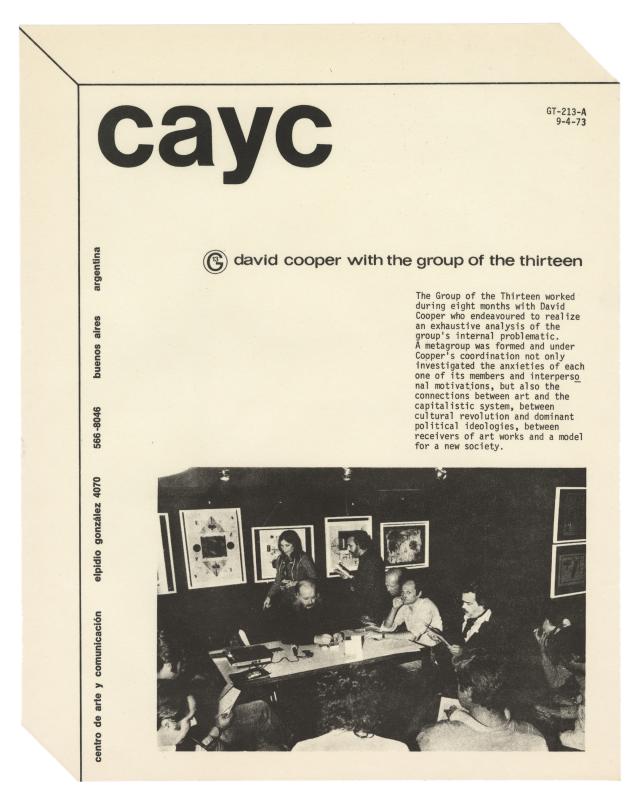Ever since it was founded, the CAYC (Centro de Arte y Comunicación), helmed by the cultural promoter, artist, and businessman Jorge Glusberg, was intended as an interdisciplinary space where an experimental art movement could flourish. The establishment of collaborative networks connecting local and international artists and critics played an important role in this process. In addition to the exhibitions, a program of different activities exposed attendees to the latest in art and scientific thinking. According to Glusberg, the coordination between theoretical thinking and artistic practice was an essential part of social change.
In its early years the center organized a variety of activities with intellectuals that contributed to the circulation of ideas from different disciplines (analytical philosophy, mathematical logic, epistemological problems, psychology, semiotics, and linguistics), which had been excluded from official circles.
The center’s interest led to the creation of the Escuela de Altos Estudios (EAE) in January 1973 (GT- 201; doc. no. 1478752). Though gatherings of this kind had happened before—some of them were associated with the Sociedad Argentina de Análisis Filosófico (SADAF)—the EAE created a formal space that included academics and intellectuals where ideas could be shared.
This newsletter invites readers to “Antipsiquiatría, política y Tercer Mundo” , the lecture that David Cooper (1931–1986) delivered at the CAYC in July 1973. Cooper was associated with the CAYC in its early days (GT- 202; doc. no. 1478808, GT-208; doc. no. 1478809, GT-213-A; doc. no. 1476423) as one of the original members of the Grupo de los Trece. He did not agree with traditional psychiatric methods because they replicate the same kind of dominant relationships that are so prevalent in contemporary society. If mental sickness was simply a “repressive category” wielded by groups that hold power, madness might be understood, in those terms, as a revolutionary act. Cooper’s idea was thus aligned with the many practices and disciplines that, at that time of national oppression, were challenging institutions. They were seen as spaces for the exercise of an authoritarian and asymmetrical power, a trend that was in sync with the liberating and politicized perspective taken by the Grupo de los Trece in 1972. The interest in spreading Cooper’s ideas in Buenos Aires should be read in terms of extending the concept to the cultural arena—specifically, in Latin America, in terms of the dissemination of the Theory of Dependence and the dynamic of the oppressed, which explained that the poverty the region’s countries were experiencing was a result of the political and financial oppression of the great world powers while promoting their liberation.

